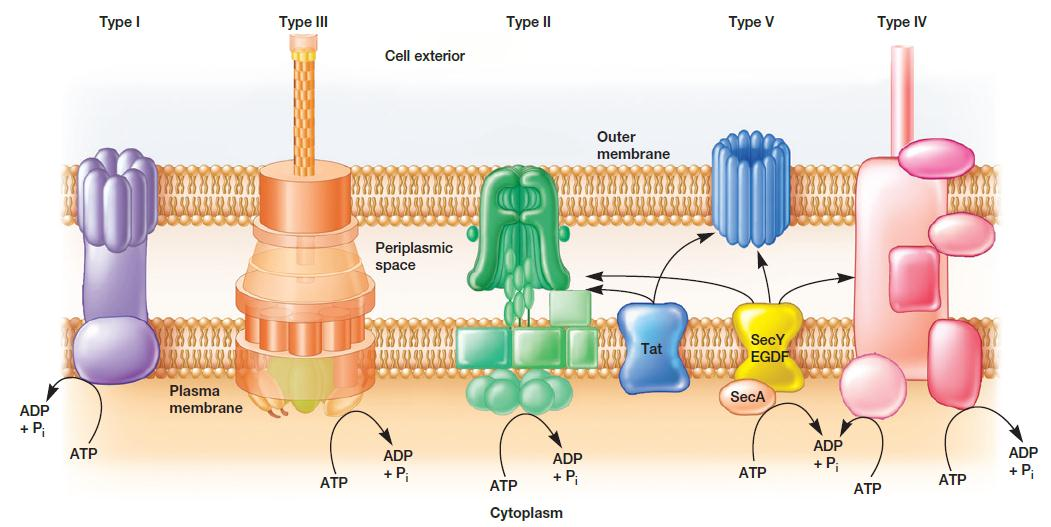L08 Metabolism and Protein Secretion
Metabolism
Metabolism is the total of all chemical reactions in the cell and is divided into two parts
catabolism 异化作用;分解代谢
anabolism 同化作用;合成代谢
Contribute to cycling of elements in ecosystems
- some cycling reactions performed only by microbes
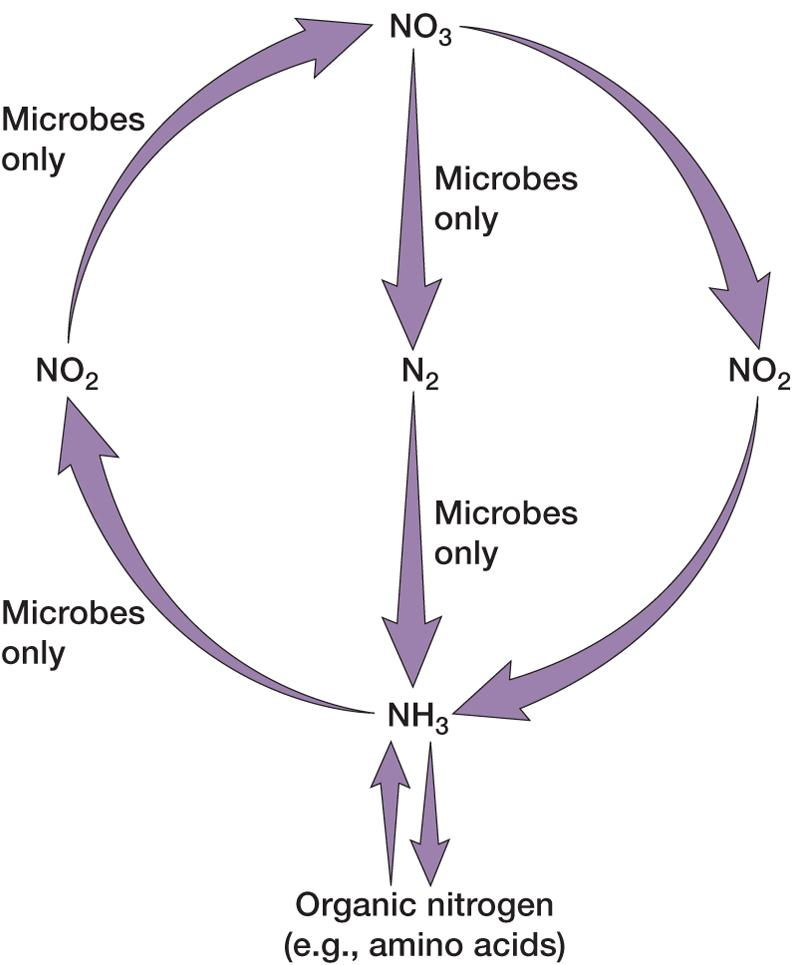
一、 Catabolism: Energy Release and Conservation
Diversity
1. Requirements for Carbon, Hydrogen, and Oxygen
Often satisfied together
- carbon source often provides H, O, and electrons
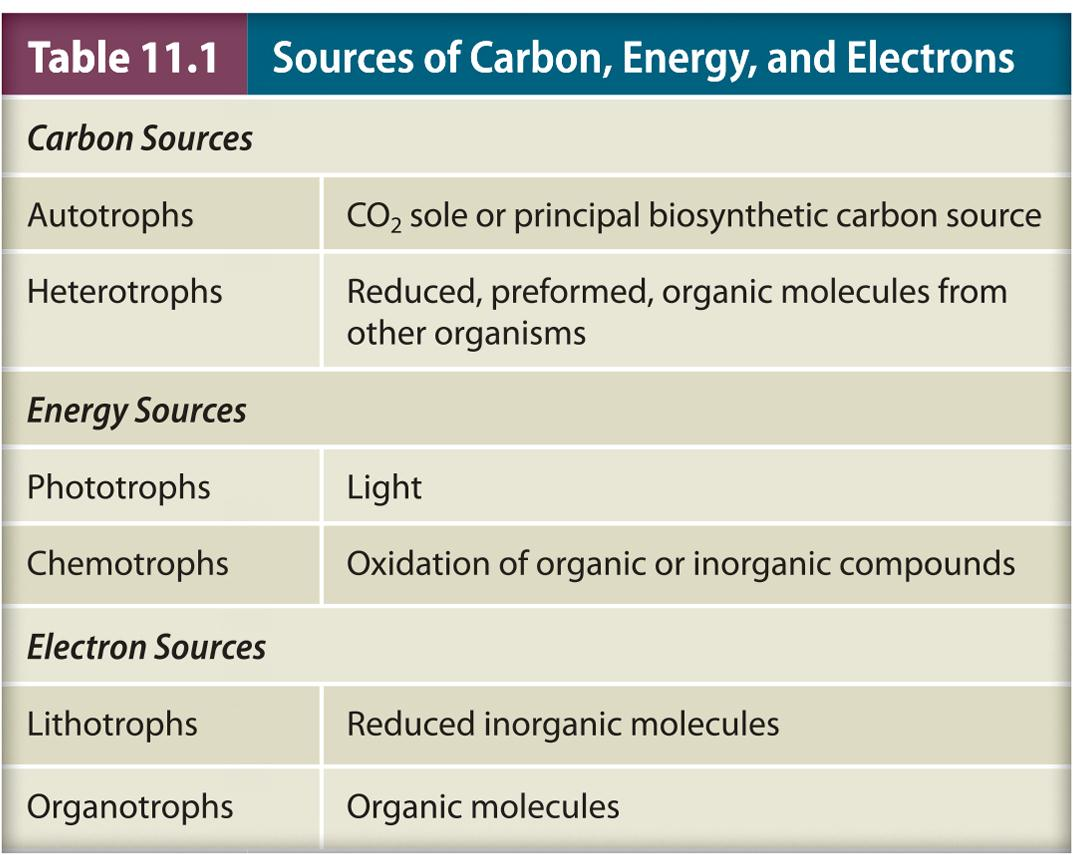
| Carbon Sources | |
|---|---|
| Autotrophs 自养生物 | CO2 sole or principal biosynthetic carbon source |
| Heterotrophs 异养生物 | Reduced, preformed, organic molecules from other organisms |
| Energy Sources | |
|---|---|
| Phototrophs 光养型生物 | Light |
| Chemotrophs 化能生物 | Oxidation of organic or inorganic compounds |
| Electron Sources | |
|---|---|
| Lithotrophs 无机营养型 | Reduced inorganic molecules |
| Organotrophs 有机营养型 | Organic molecules |
2. Major Nutritional Types

3. Fueling Reactions 供能反应
Despite diversity of energy, electron, and carbon sources used by organisms, they all have the same basic needs
ATP as an energy currency
Reducing power to supply electrons for chemical reactions
Precursor metabolites for biosynthesis
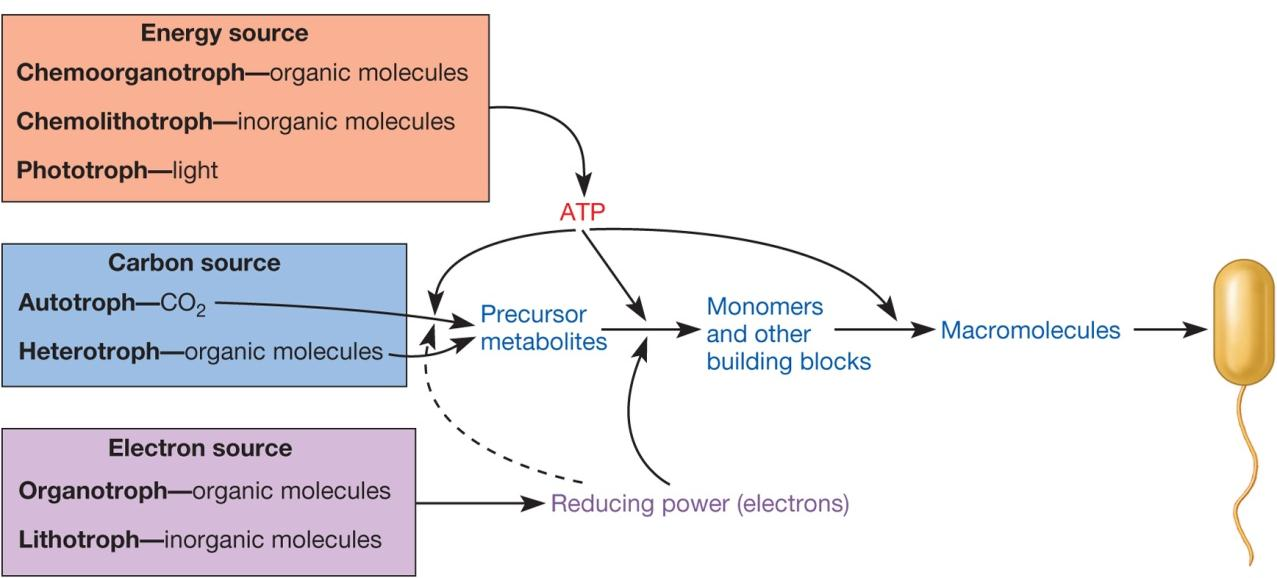
Chemoorganotrophy 化能有机营养
Carried out by chemoorganoheterotrophs
Example Processes
aerobic respiration
anaerobic respiration
fermentation
1. Respiration
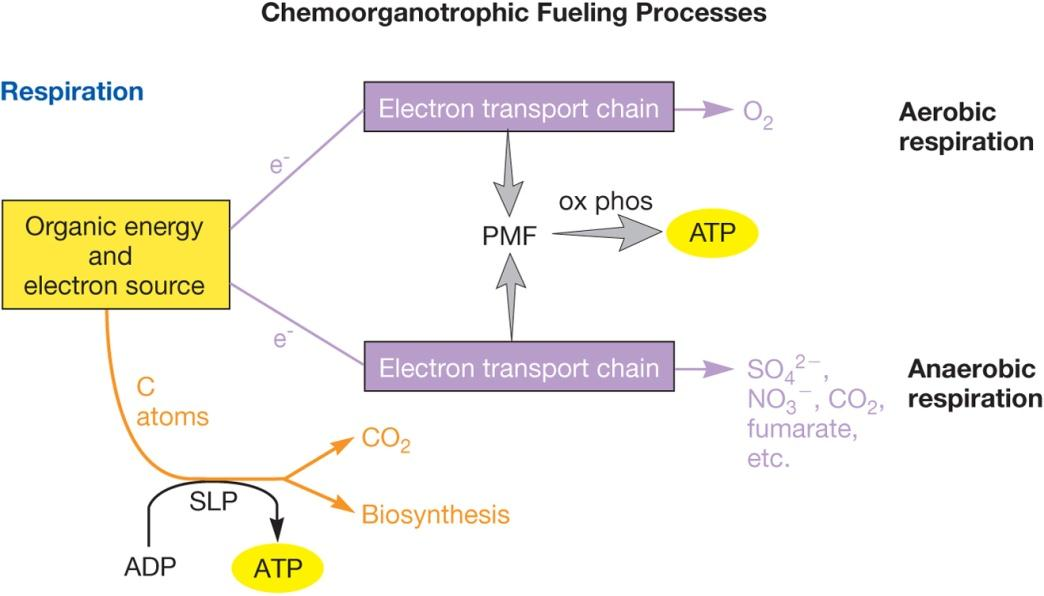
aerobic respiration 需氧呼吸
final electron acceptor is oxygen
anaerobic respiration 无氧呼吸
- final electron acceptor is different exogenous acceptor such as :

- organic acceptors may also be used
ATP made primarily by oxidative phosphorylation , Generally yields less energy
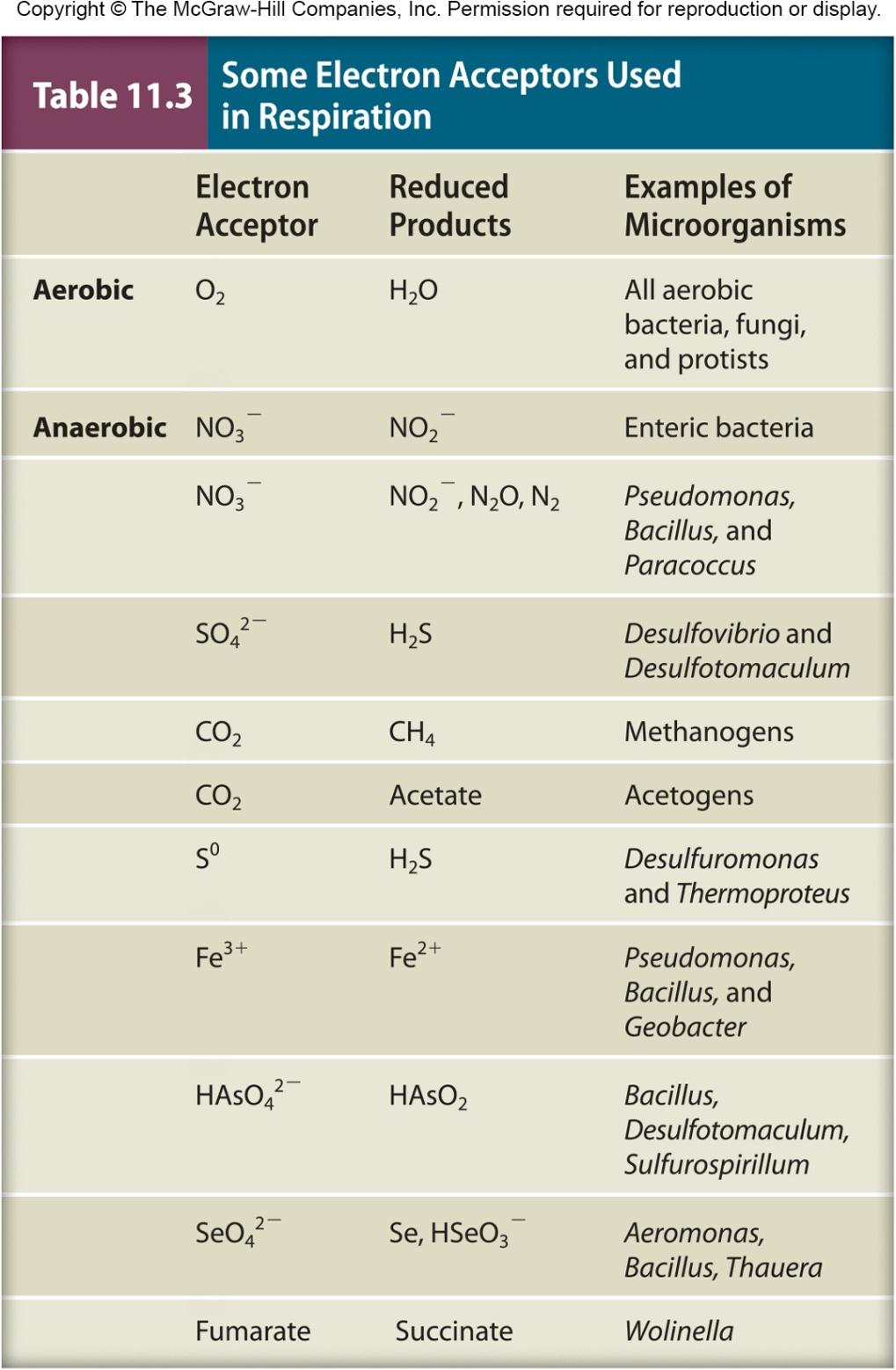
Electron Transport Chain
In eukaryotes the $e^{-}$ transport chain carriers are in the inner mitochondrial membrane, connected by coenzyme Q and cytochrome c
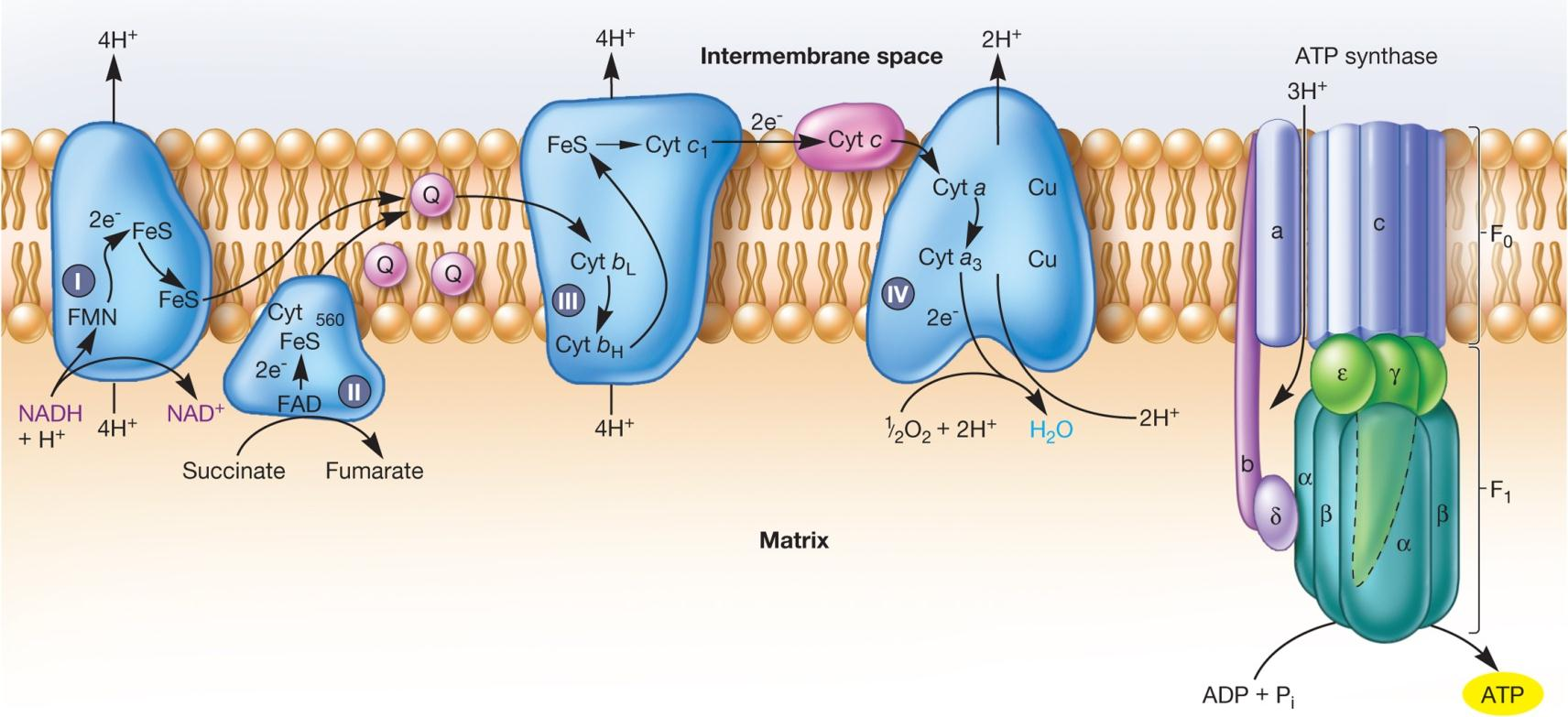
(1) Bacterial and Archaeal ETCs
Located in plasma membrane
Some resemble mitochondrial ETC, but many are different
different electron carriers
may be branched
may be shorter
may have lower P/O ratio
Example: Paracoccus denitrificans 脱氮副球菌
Facultative, soil bacterium
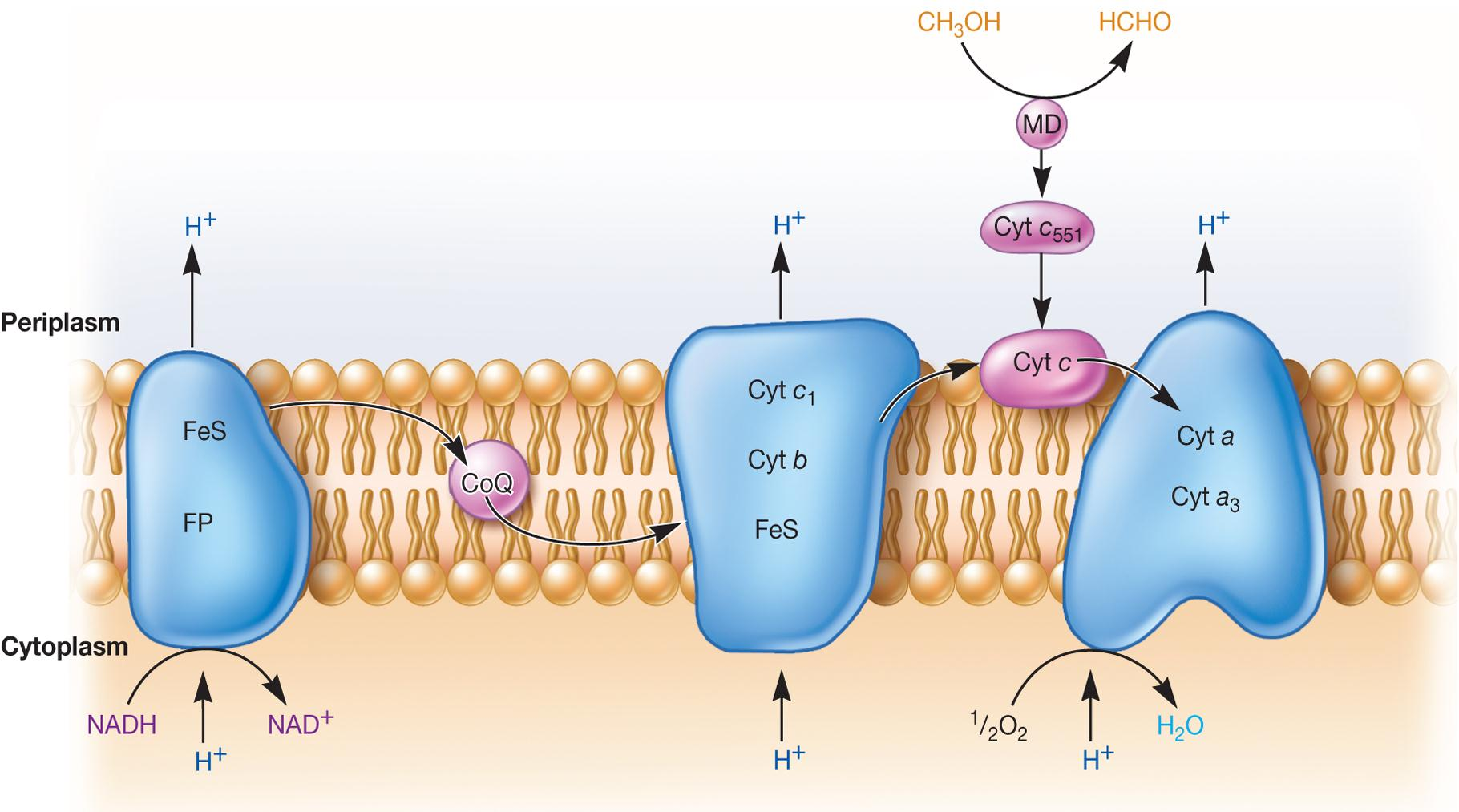
2. Fermentation
Fermentation
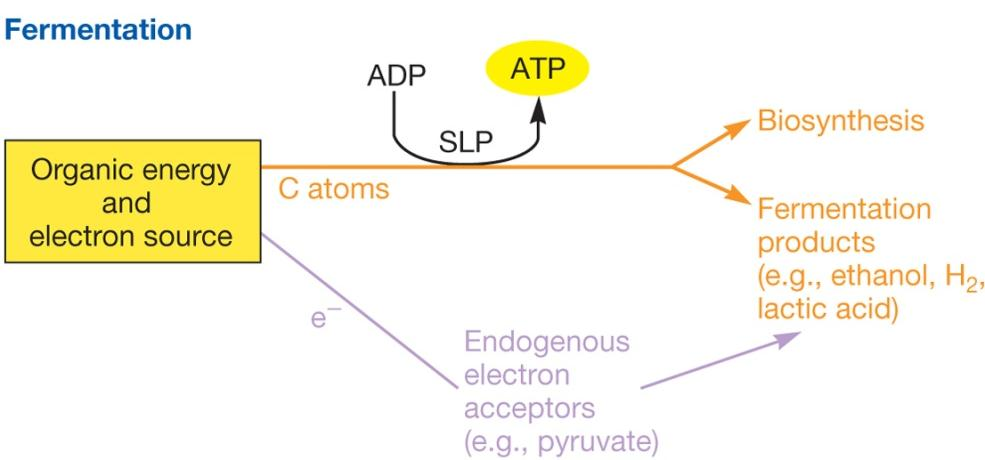
No ETC (Electron Transport Chain) and PMF (Proton Motivation Force)
Uses an endogenous electron acceptor
ATP synthesized only by SLP
An Special Outer membrane protein Called SLP
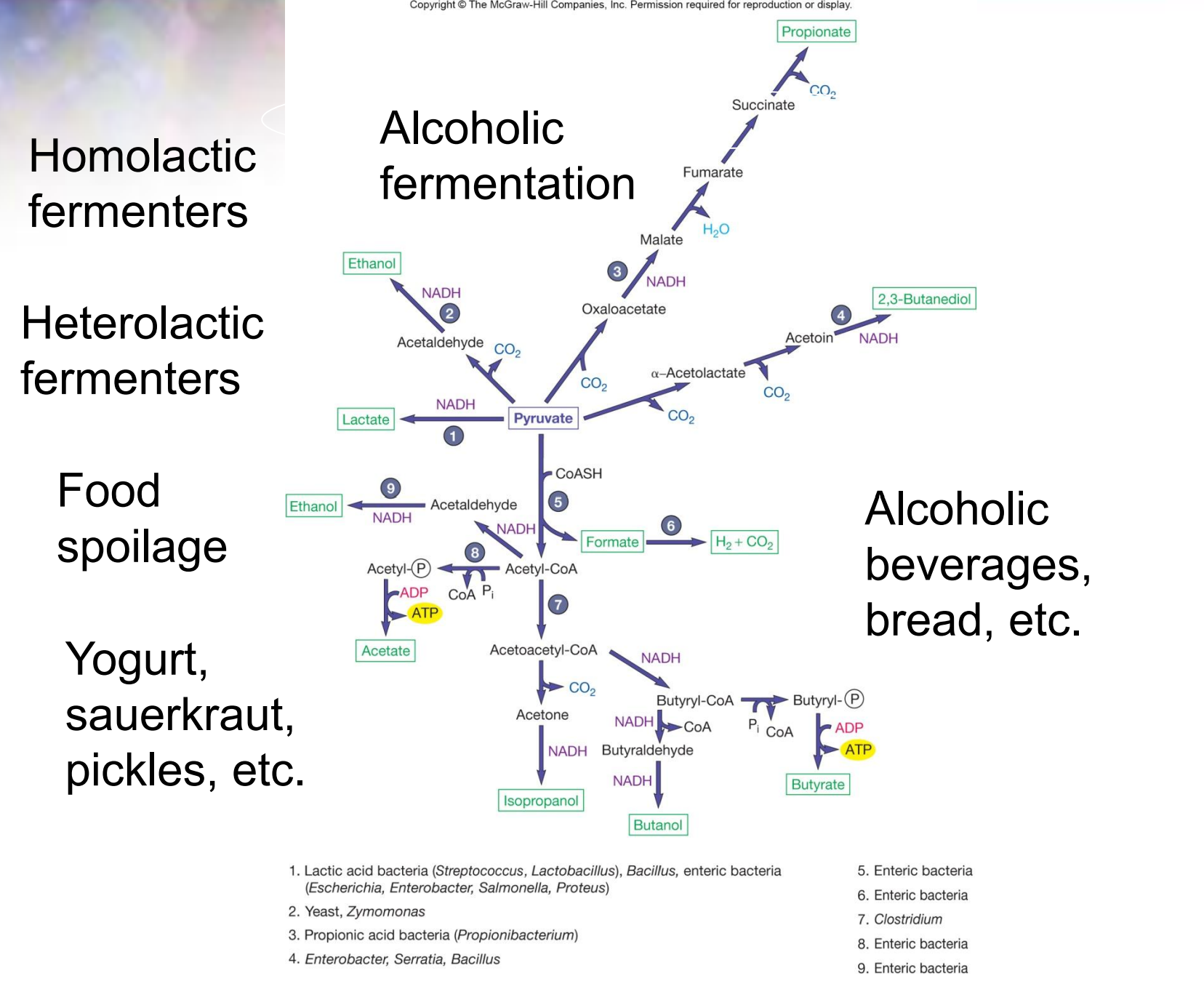
Chemolithotrophy 化能无机营养
Carried out by chemolithotrophs
Inorganic molecule and TEC
ATP synthesized by oxidative phosphorylation 磷酸化作用
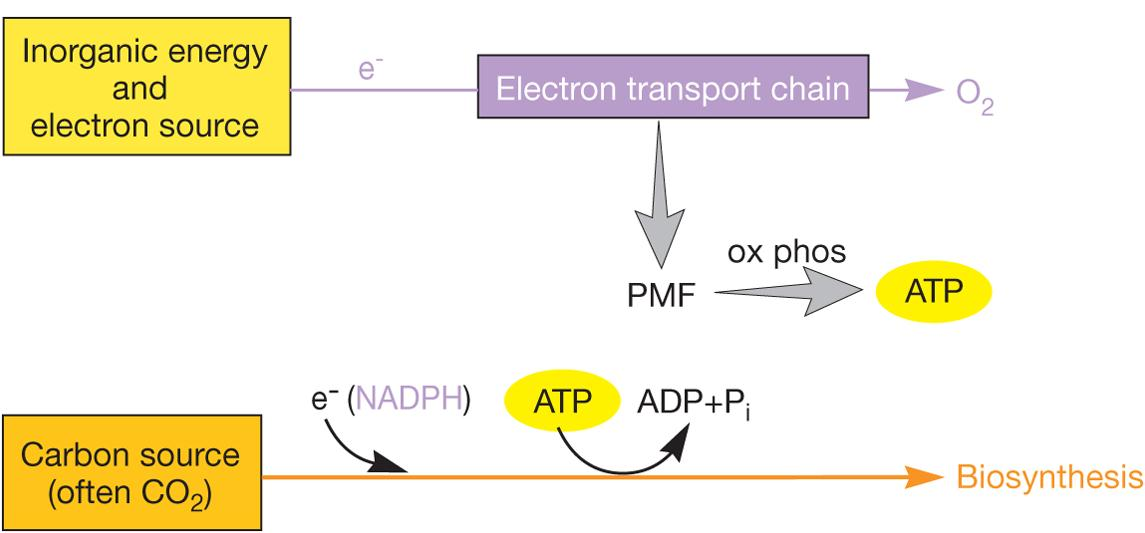
Examples:

1. Energy Sources
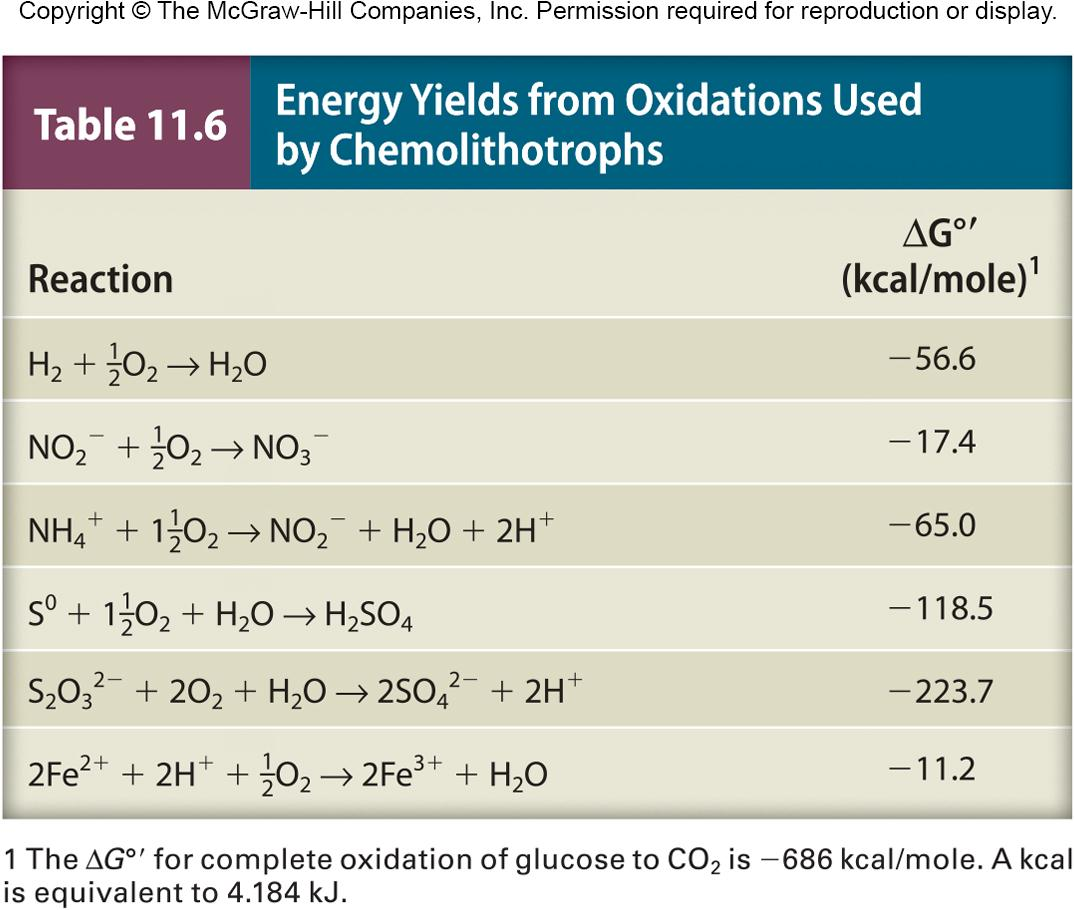
Much less energy is available from oxidation of inorganic molecules than glucose oxidation
2. Major Groups of Chemolithotrophs
Have ecological importance
Several bacteria and archaea oxidize hydrogen
Nitrifying bacteria oxidize ammonia to nitrate
Sulfur-oxidizing microbes
- hydrogen sulfide ($H_{2} S$), sulfur ($S^{0}$), thiosulfate ($S_{2} O_{3} ^{2-}$)
Sulfur-Oxidizing Bacteria

ATP can be synthesized by both oxidative phosphorylation and substrate-level phosphorylation
3. Reverse Electron Flow by Chemolithotrophs
Many energy sources used by chemolithotrophs have higher redox potential than NAD+(P)/NAD(P)H
- use reverse electron flow to generate NAD(P)H
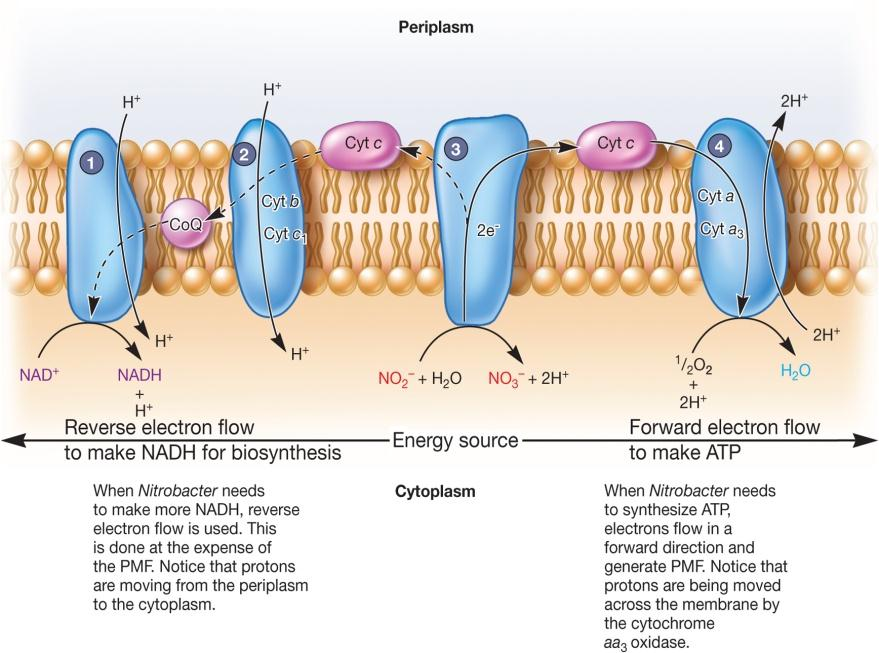
Phototrophy 光营养
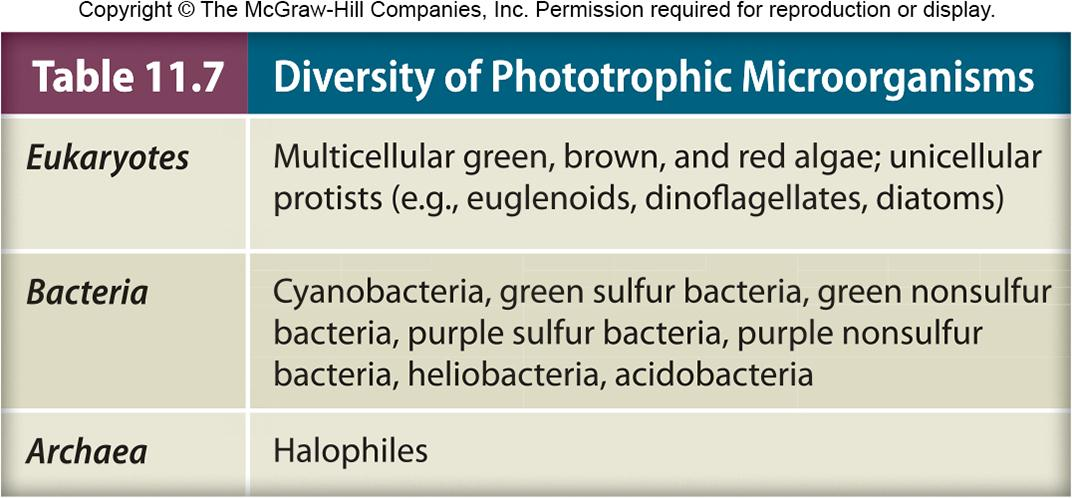
1. Light Reactions in Oxygenic Photosynthesis
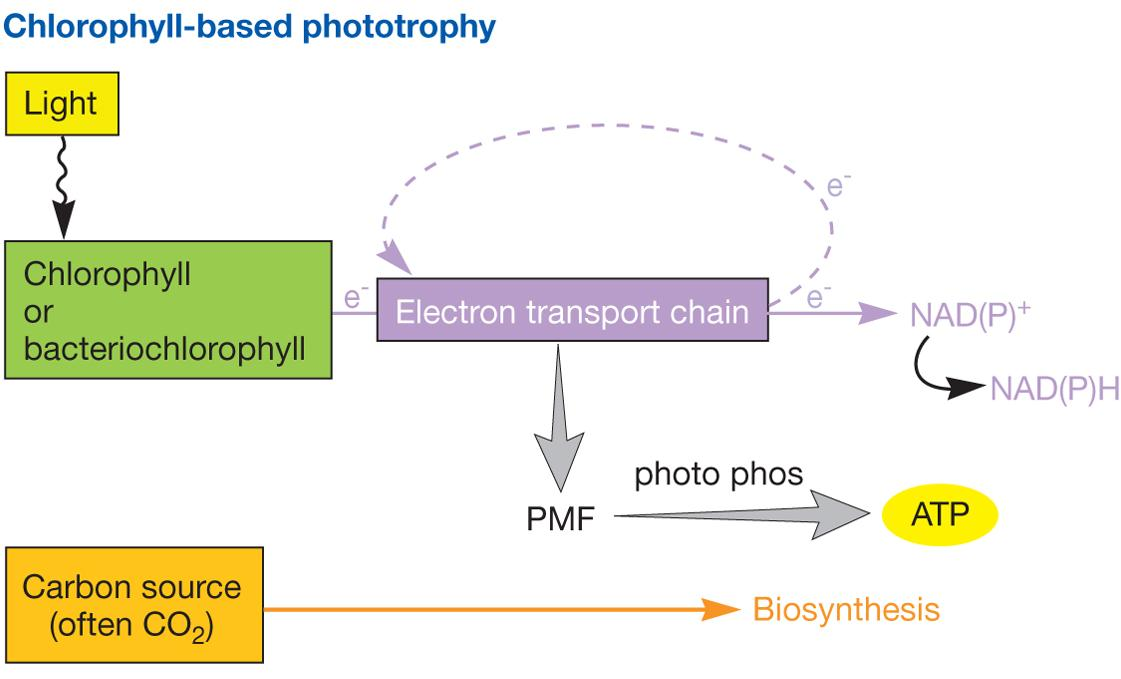
Photosynthetic eukaryotes and cyanobacteria
Oxygen is generated
Most important pigments are chlorophylls
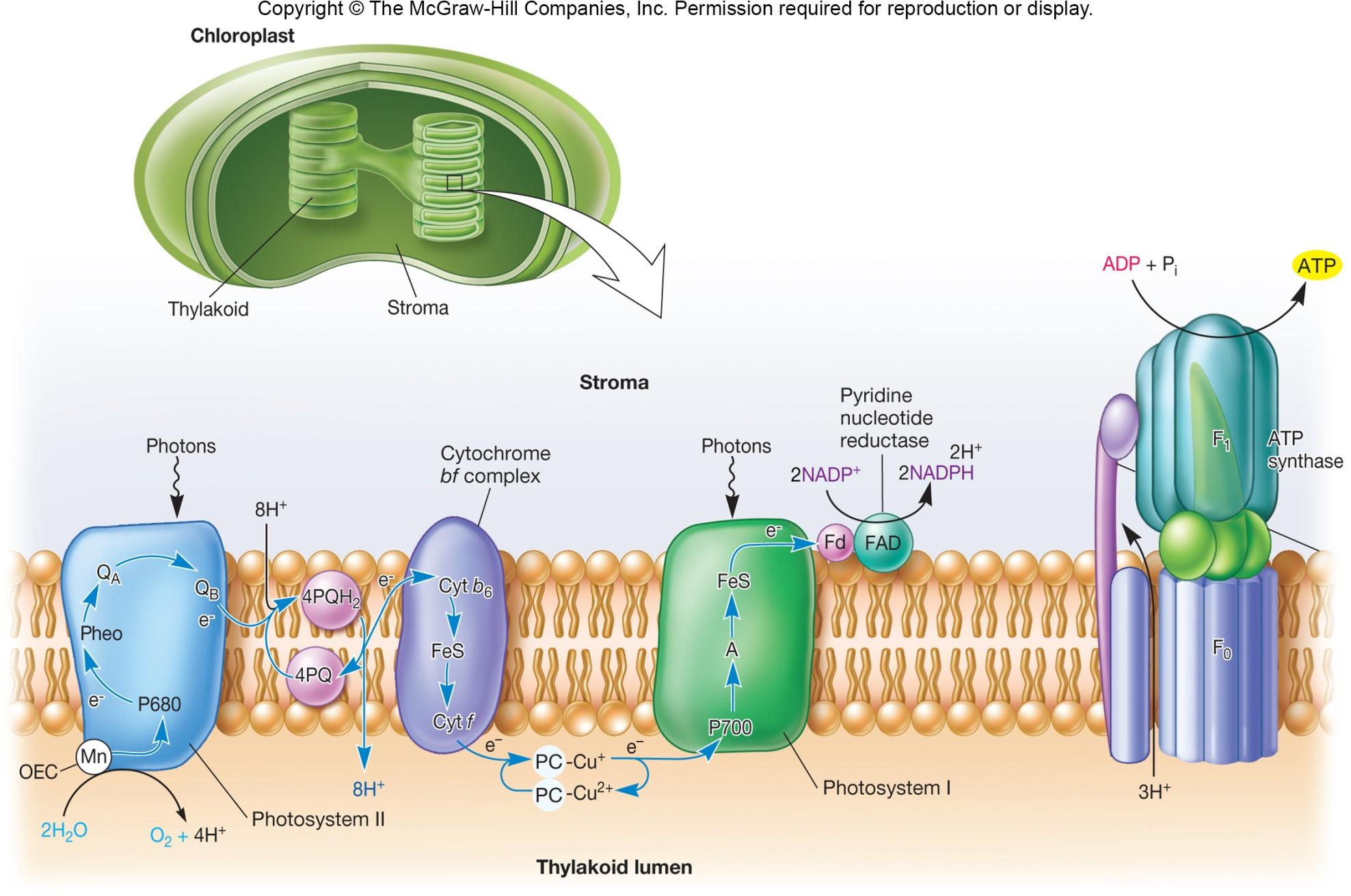
2. The Light Reaction in Anoxygenic Photosynthesis
H2O not used as an electron source; therefore O2 is not produced
Only one photosystem involved
Uses bacteriochlorophylls
Carried out by phototrophic green bacteria, phototrophic purple bacteria, and heliobacteria
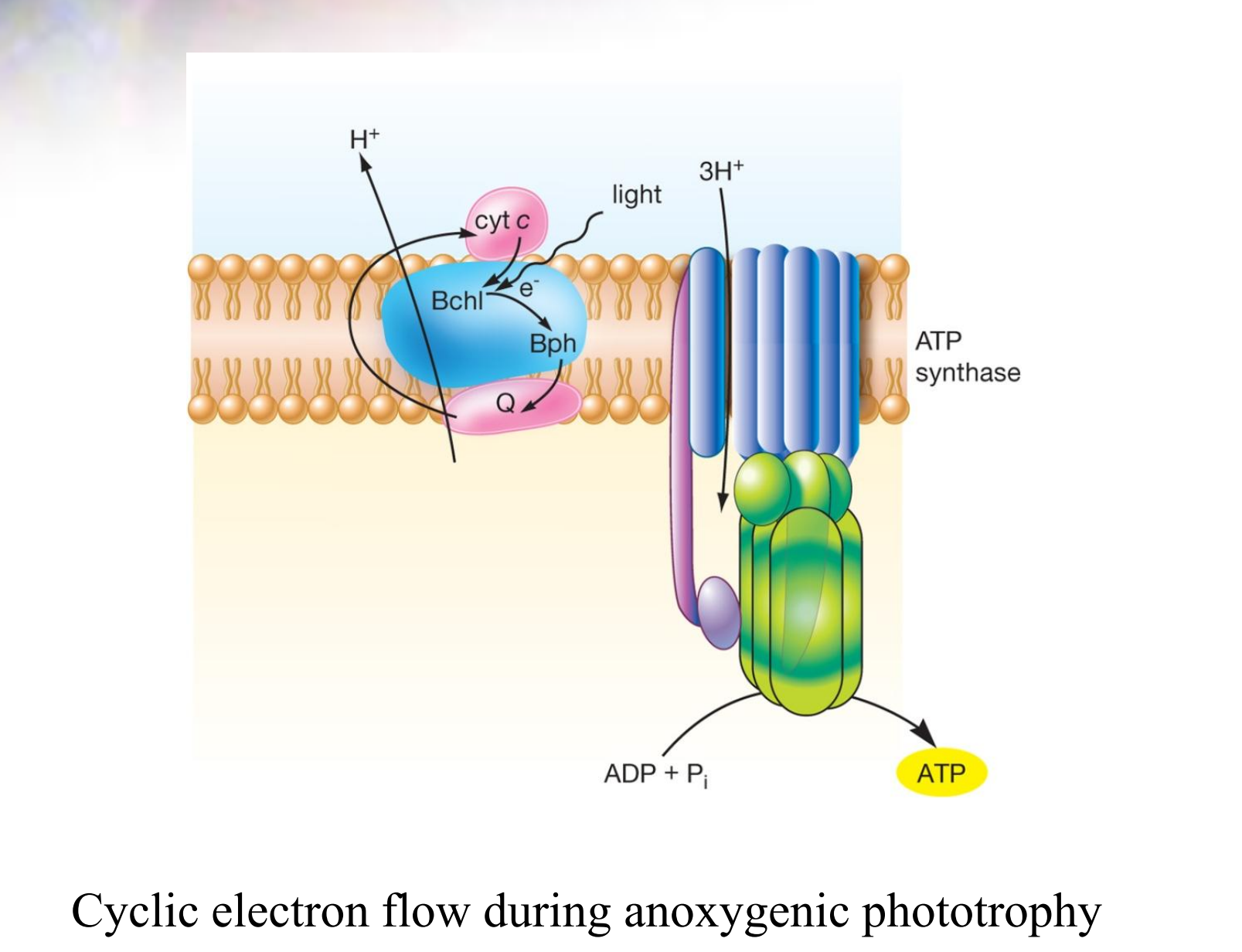
3. Comparision Between Photosynthetic Systems
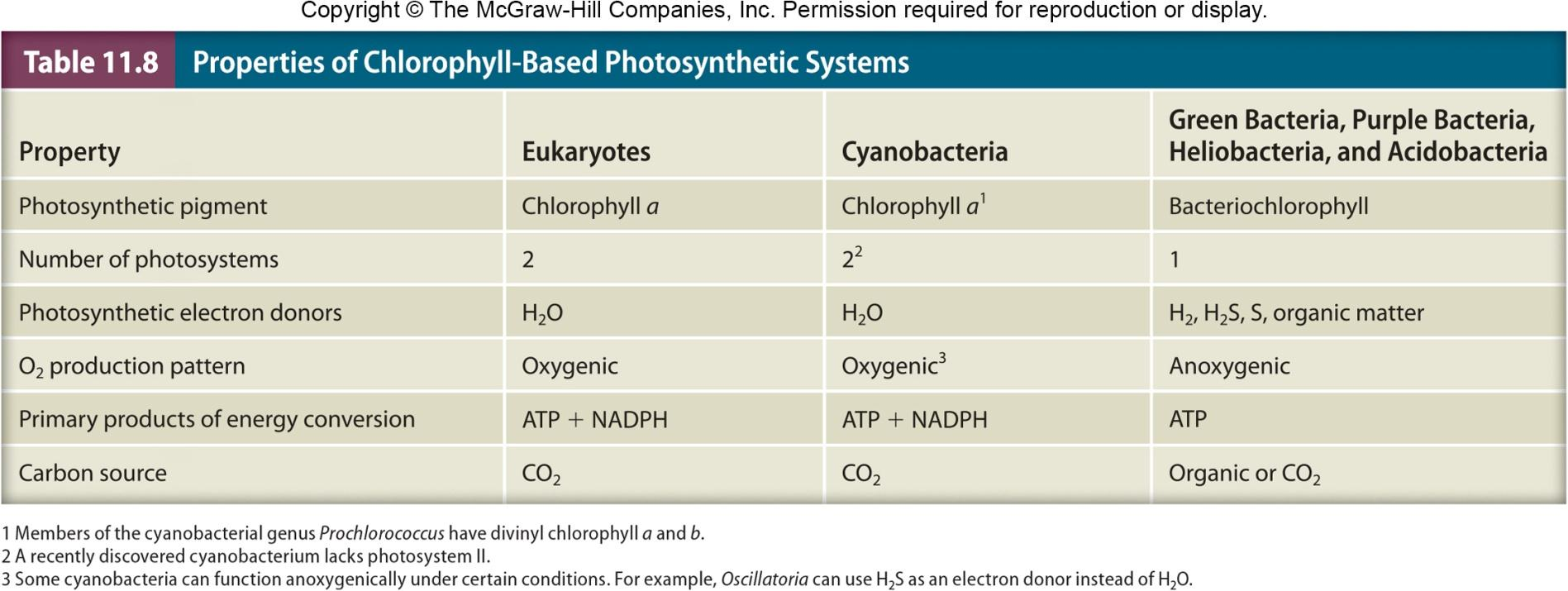
4. Bacteriorhodopsin-Based Phototrophy
Some archaea use bacteriorhodopsin
a membrane protein
functions as a light-driven proton pump
A proton motive force is generated
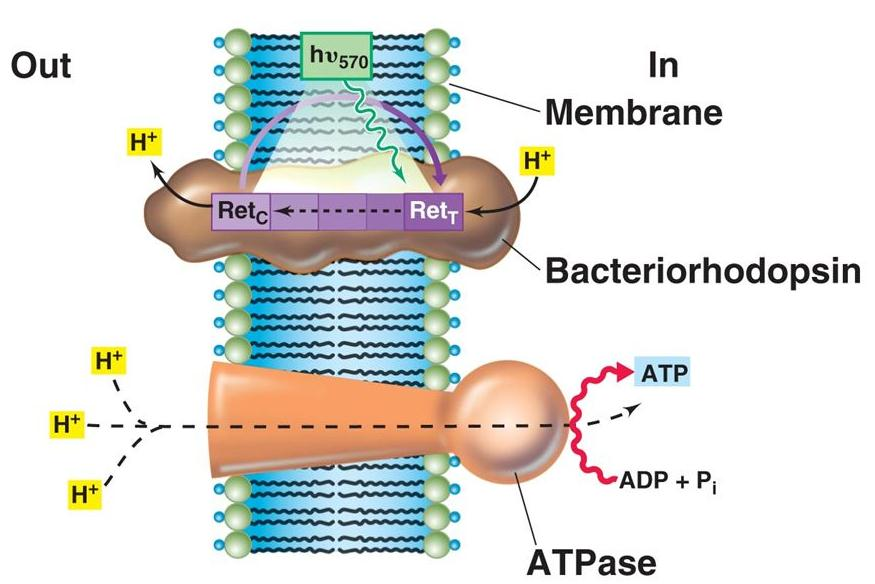
二、Anabolism: Synthesis of Peptidoglycan
Peptidoglycan(肽聚糖) Synthesis
Complex process involving UDP derivatives
Figure 12.9:
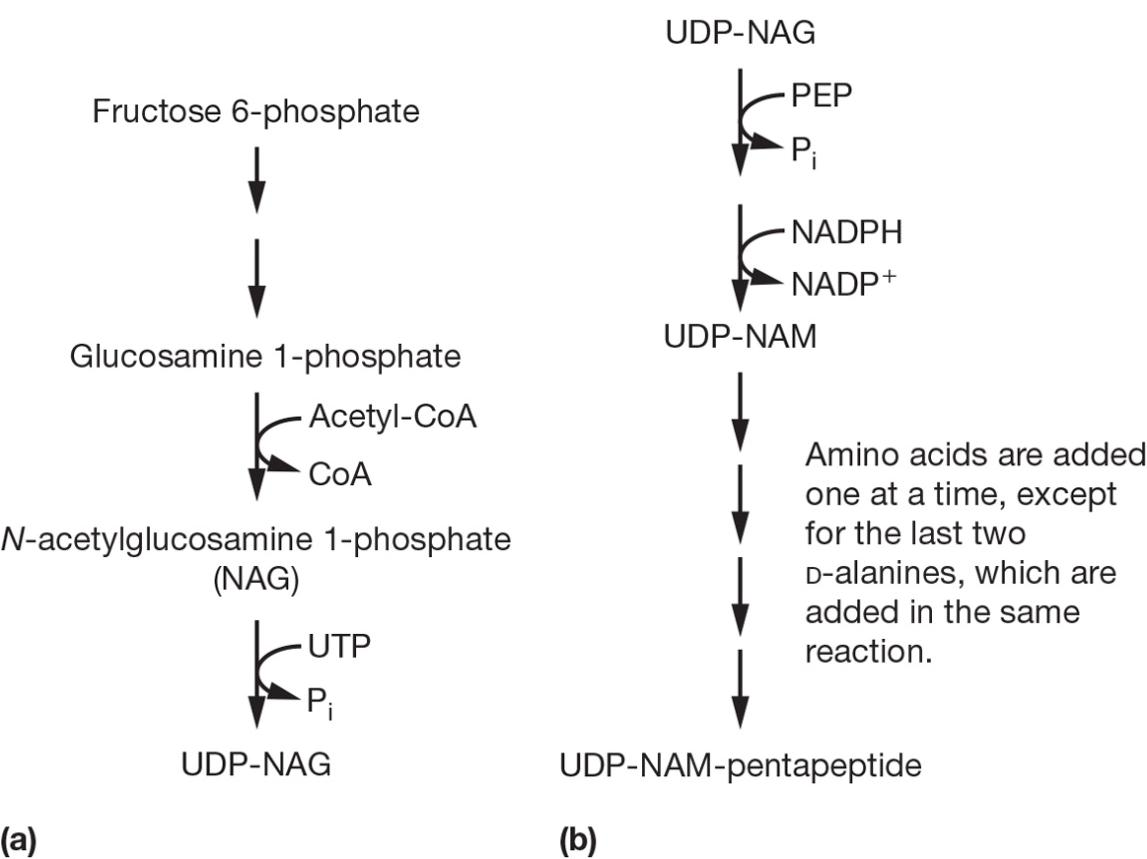
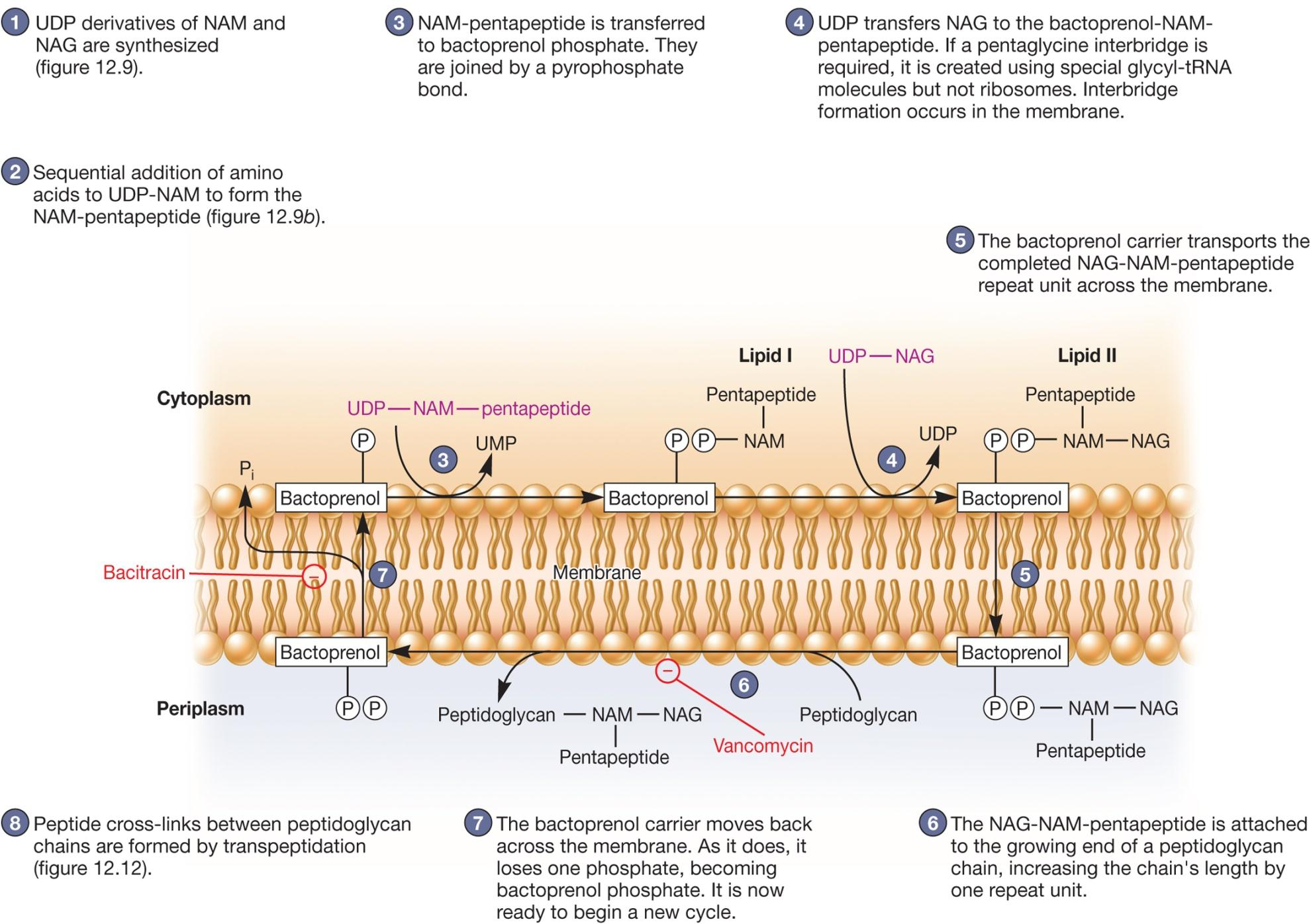
Steps:
UDP derivatives of NAM and NAG are synthesized (Figure 12.9)
Sequential addition of amino acids to UDP-NAM to form the NAM-pentapeptide (figure 12.9b).
NAM-pentapeptide is transferred to bactoprenol phosphate. They are joined by a pyrophosphate bond.
UDP transfers NAG to the bactoprenol-NAM-pentapeptide. If a pentaglycine interbridge is required, it is created using special glycyl-tRNA molecules but not ribosomes. Interbridge formation occurs in the membrane.
The bactoprenol carrier transports the completed NAG-NAM-pentapeptide repeat unit across the membrane.
The NAG-NAM-pentapeptide is attached to the growing end of a peptidoglycan chain, increasing the chain’s length by one repeat unit.
The bactoprenol carrier moves back across the membrane. As it does, it loses one phosphate, becoming bactoprenol phosphate. It is now ready to begin a new cycle.
Peptide cross-links between peptidoglycan chains are formed by transpeptidation

三、Bacteria Genome Replication and Expression: Protein Secretion
Protein Translocation and Secretion in Bacteria
Numerous protein secretion pathways have been identified
some reside in all 3 domains
some unique to Bacteria and Archaea
Some unique to gram-negative cells
1. Sec-Dependent Pathway
Also called general secretion pathway
highly conserved in all domains
transporting unfolded proteins
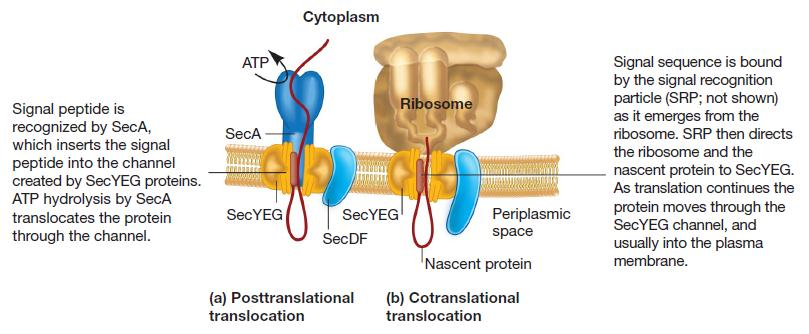
2. Some Secretion Pathways of Gram-negative Bacteria
